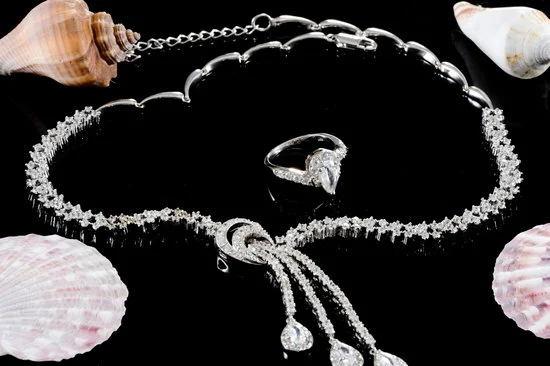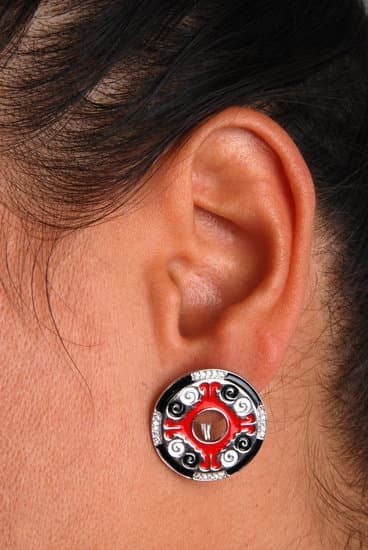Properly maintaining and cleaning jewelry is essential to preserving its beauty and longevity. However, many people may not realize the potential risks and damages that can occur if jewelry is left in cleaners for an extended period of time. In this article, we will explore the effects of leaving jewelry in cleaner too long and highlight the importance of safe cleaning practices.
To begin, it’s important to understand what jewelry cleaner is and the common substances used in it. Jewelry cleaner is a solution specifically designed to remove dirt, grime, and tarnish from various types of jewelry. It typically contains different chemicals such as ammonia, peroxide, or even baking soda. While these substances are effective at removing impurities, they can also interact with the metals and gemstones in your jewelry if left for too long.
One of the main consequences of leaving jewelry in cleaner too long is the occurrence of chemical reactions. When exposed to certain cleaning agents, jewelry can undergo chemical changes that result in damage to both its appearance and structure. For example, metal jewelry may become tarnished or discolored due to prolonged exposure to particular cleaner ingredients. Additionally, delicate gemstones can become weakened or even damaged by the chemical properties found within the cleaner solution.
Overall, leaving jewelry in cleaner for too long can lead to a range of problems including erosion of coatings or plating, weakened gemstones, tarnishing of metals, discoloration, and even potential health risks from residue left on the jewelry. That is why it is crucial to understand these potential hazards and how to properly clean your precious pieces without risking their beauty or integrity.
By following proper care instructions and seeking professional advice when necessary, you can ensure that your cherished jewelry remains exquisite and withstands the test of time.
The Effects of Chemical Reactions on Jewelry
When it comes to cleaning your jewelry, it’s important to understand the potential hazards of leaving it in a cleaner for too long. Jewelry cleaner is typically made up of various substances that are designed to effectively remove dirt and grime from your precious pieces. However, if left in the cleaner for an extended period of time, chemical reactions can occur that may result in damage to your jewelry.
Chemical reactions between the jewelry and the cleaner solution can lead to undesirable changes in the appearance and structure of your jewelry. For example, certain metals can react with the chemicals in the cleaner and become tarnished or discolored. Gold and silver are particularly susceptible to these reactions. The reaction products can leave unsightly stains or discoloration on the surface of your jewelry, diminishing its overall beauty.
Different types of jewelry materials may react differently when exposed to cleaners. For instance, while gold and silver may tarnish, gemstones can also be affected by prolonged exposure to cleaning agents. The chemical properties within the cleaner can weaken or damage gemstones, causing them to chip, crack, or even break completely. It is important to identify more delicate gemstones and handle them appropriately during cleaning to prevent any irreversible damage.
To minimize these effects on your jewelry, there are a few steps you can take. Firstly, avoid using cleaners with harsh chemicals that may cause damage. Instead, opt for mild detergent solutions or specialized jewelry cleaners specifically formulated for your type of metal or gemstone. Additionally, always follow the recommended cleaning duration as instructed by the manufacturer and avoid leaving your jewelry in the cleaner for longer than necessary.
Tarnishing and Discoloration of Metals
When jewelry is left in a cleaner for too long, one of the most common and noticeable effects is tarnishing and discoloration of metals. Prolonged exposure to certain cleaner ingredients can lead to chemical reactions that result in changes in the appearance of metal jewelry. These reactions are primarily due to the interaction between the metals and the chemicals present in the cleaner.
The specific chemical reactions that occur can vary depending on the type of metal used in the jewelry. For example, silver jewelry is particularly susceptible to tarnishing when exposed to sulfur-based compounds found in many cleaning solutions. This reaction forms a dark layer on the surface of the silver, giving it a dull appearance. Similarly, copper jewelry can develop a greenish layer called patina when exposed to air and moisture over time.
To prevent or minimize tarnishing and discoloration, it’s important to understand how different metals react with various cleaning solution ingredients. For instance, avoiding cleaners containing sulfides or chlorine can help prolong the shine and luster of silver jewelry. Additionally, storing clean jewelry in airtight containers or using anti-tarnish strips can also help maintain its appearance for longer periods.
Taking care not to expose metal jewelry to excessive humidity or strong chemicals is crucial as well. High humidity environments accelerate tarnishing processes, so storing your pieces in dry conditions is advisable. Furthermore, removing your metal jewelry before swimming in chlorinated water or coming into contact with household cleaning agents will help prevent any unwanted chemical reactions.
Weakening of Gemstones and Prone to Damage
Gemstones are a popular choice for jewelry due to their natural beauty and durability. However, these precious stones can be vulnerable to damage if not properly cared for, especially when exposed to cleaning agents for an extended period of time. This section will explore the specific risks and damages that can occur when gemstones are left in jewelry cleaner too long.
Chemical reactions between cleaning agents and gemstones can weaken or damage these delicate stones. Certain gemstones, like opals and pearls, are particularly sensitive to chemicals and can easily become discolored or lose their luster when exposed to harsh cleaners. For example, the chemical properties in some cleaners can strip away the oils that give opals their iridescent colors, leaving them dull and lifeless.
Furthermore, prolonged exposure to cleaning agents can lead to chips, cracks, or breakages in gemstones. This is especially true for softer stones such as emeralds or tanzanite. These gems may have inclusions or fractures that are not immediately visible but can worsen over time if subjected to the corrosive nature of certain cleaner ingredients.
To prevent damage to gemstone jewelry during cleaning, it is important to identify more delicate stones and handle them appropriately. Some steps you can take include:
- Determine the hardness level of your gemstone using the Mohs scale of mineral hardness.
- Read the manufacturer’s instructions for your jewelry cleaner carefully and ensure it is suitable for your specific gemstone.
- Use a soft brush or cloth instead of soaking your gemstone jewelry in cleaner.
- If necessary, consult with a professional jeweler who specializes in cleaning and caring for gemstone jewelry.
Proper care is essential in preserving both the appearance and longevity of gemstone jewelry. By understanding the risks associated with leaving jewelry in cleaner too long and taking appropriate precautions during cleaning, you can maintain the beauty and integrity of your cherished pieces for years to come.
Erosion and Loss of Coatings or Plating
Leaving jewelry in a cleaner for too long can result in the erosion and loss of coatings or plating on certain pieces. Many types of jewelry, especially those made with base metals or less expensive materials, are coated or plated with a thin layer of another metal, such as gold or silver, to enhance their appearance.
This coating not only adds shine and luster to the jewelry but also provides a protective barrier against tarnish and corrosion. However, when jewelry is left in a cleaner solution for an extended period, this coating can start to erode.
The impact of erosion and loss of coatings or plating on jewelry can be significant. Not only does it affect the overall aesthetic and beauty of the piece, but it also exposes the underlying material to potential damage and deterioration. Without the protective barrier provided by the coating, the base metal of the jewelry becomes more susceptible to tarnishing, oxidation, and discoloration.
To identify if your jewelry has a coating or plating that may be at risk of erosion, look for signs such as fading color, visible wear spots where the underlying metal is exposed, or rough texture on parts that were once smooth. It’s important to note that different types of coatings may react differently to prolonged exposure in a cleaning solution. For example:
- Gold-plated jewelry: The gold layer on gold-plated jewelry is typically quite thin and delicate. Prolonged exposure to certain cleaning agents can cause this layer to wear off more quickly, resulting in a dull appearance.
- Silver-plated jewelry: Silver-plated jewelry is prone to tarnishing even without prolonged exposure to cleaners. Leaving them in a cleaning solution for too long can speed up this process significantly.
- Rhodium-plated jewelry: Rhodium plating is often added to white gold or sterling silver pieces to provide them with a bright white finish. Over time, exposure to cleaners can cause the rhodium plating to wear off, revealing the underlying metal’s natural color.
To maintain and protect your coated or plated jewelry, it is advisable to minimize their exposure to cleaning solutions or opt for gentler cleaning methods. When cleaning such jewelry, avoid using abrasive materials or harsh chemicals and instead opt for mild soap and water or specialized jewelry cleaning solutions specifically formulated for coated pieces. Additionally, be sure to follow the manufacturer’s instructions for care and maintenance of your coated or plated jewelry.
| Coating Type | Effect of Prolonged Exposure to Cleaners |
|---|---|
| Gold-plated | The gold layer may wear off more quickly, resulting in a dull appearance. |
| Silver-plated | Tarnishing may occur at an accelerated rate. |
| Rhodium-plated | The rhodium plating may wear off, revealing the underlying metal’s natural color. |
Potential Health Risks from Residue Left on Jewelry
Overview of Potential Health Risks
When jewelry is left in cleaner for too long, there are not only risks to the jewelry itself but also potential health hazards associated with wearing jewelry that has residues from the cleaner. These residues can contain harmful substances that may come into contact with your skin and lead to various health issues. It is essential to properly rinse off all traces of the cleaner to ensure the safety of wearing your jewelry.
Harmful Substances in Jewelry Cleaner
Jewelry cleaners often contain chemicals such as ammonia, bleach, or other solvents that are effective in removing dirt and grime from jewelry. However, these chemicals can be harsh and potentially toxic if they come into direct contact with your skin or are ingested. Ammonia, for example, can cause skin irritation or allergic reactions. Bleach can damage your skin and respiratory system.
Proper Rinsing and Drying Techniques
To minimize the health risks associated with residue left on jewelry after cleaning, it is crucial to follow proper rinsing and drying techniques. Rinse your jewelry thoroughly under clean water to remove any remaining traces of the cleaner. Avoid using hot water as it can accelerate chemical reactions between residues and your skin.
After rinsing, gently pat dry your jewelry with a soft cloth or let them air dry completely before wearing them. Make sure there are no visible residues left on the surface of the jewelry before putting them on. If you notice any persistent residue or irritation on your skin after wearing cleaned jewelry, remove it immediately and consult a healthcare professional if necessary.
Overall, while cleaning your jewelry is important for its longevity and appearance, it is equally vital to prioritize your health by fully removing all residues from the cleaning process. Take care to use safe cleaning practices and seek professional advice when needed to ensure both the beauty of your jewelry and your well-being.
Repairing and Restoring Damaged Jewelry
When jewelry has been left in cleaner for too long, it can result in various damages that may require repair and restoration. Jewelers offer professional services to fix these issues, but there are also DIY solutions that can be explored depending on the extent of the damage and individual preferences.
Professional Repair Services:
- Cleaning and refinishing: Jewelers can clean the jewelry thoroughly to remove any residues from the cleaner. They can also refinish the metal surface to restore its shine and luster.
- Stone replacement: If gemstones have been damaged or lost during the cleaning process, jewelers can replace them with new stones that match the original ones.
- Polishing and buffing: For jewelry with scratches or dull surfaces, jewelers can polish and buff the piece to restore its smoothness and shine.
- Restringing: If a necklace or bracelet made of beads or pearls has broken due to weakened stringing material, jewelers can restring it using stronger materials for added durability.
DIY Solutions:
- Tarnish removal: For jewelry that has tarnished or lost its shine, there are DIY methods to remove tarnish using household items such as baking soda or toothpaste. However, caution must be exercised as these methods might not be suitable for all types of jewelry materials.
- Gentle cleaning solutions: Using mild soap and warm water along with a soft brush, gentle cleaning can be done at home to remove dirt and debris from jewelry. This method is safe for most types of jewelry but should not be used if the item has delicate gemstones or coatings/plating.
- Buffalo hide polishing cloth: A soft buffalo hide polishing cloth can be used to gently polish certain jewelry pieces like silver or gold without causing scratches or additional damage.
It is important to note that not all damages from leaving jewelry in cleaner too long can be repaired at home, especially if they involve complex issues or valuable pieces. In such cases, seeking professional assistance is recommended to avoid further damage or loss of the jewelry.
Overall, prevention is key to avoiding the need for extensive repair and restoration. Regular cleaning, proper storage, and safe handling practices can help maintain jewelry’s beauty and integrity for years to come.
Preventative Measures and Proper Jewelry Cleaning
Preventative Measures:
To avoid the risks and damages of leaving jewelry in cleaner for too long, it is important to take preventative measures. One of the simplest ways to prevent prolonged exposure to cleaning solutions is to follow the manufacturer’s instructions.
Different jewelry cleaners have different recommended time limits for soaking, so it is vital to adhere to those guidelines. Additionally, if you are unsure about the recommended cleaning time or there are no instructions provided, it is advisable to err on the side of caution and limit the cleaning time.
Proper Jewelry Cleaning:
Cleaning jewelry properly can help maintain its beauty and prevent the need for leaving it in a cleaner for extended periods. When beginning the cleaning process, start by removing any visible dirt or debris from the piece using a soft cloth or brush. Be gentle when brushing delicate areas, such as prongs or settings, to avoid causing damage.
After removing surface dirt, prepare a solution of mild soap and warm water. Place the jewelry in this solution and let it soak for a short period, usually around 5-10 minutes. Avoid using harsh chemicals or abrasive cleaners as they can cause damage.
Once soaked, use a soft brush or cloth to gently clean all parts of the jewelry. Pay close attention to areas where dirt and oil may accumulate, such as crevices or gemstone settings. Rinse thoroughly with warm water to remove any remaining residue from the cleaning solution.
After rinsing, carefully dry your jewelry with a soft cloth before storing it in a safe place. It is essential to ensure that there is no moisture left on the piece as this can lead to tarnishing or other forms of damage over time.
Seeking Professional Advice:
If you have valuable or delicate pieces of jewelry that require extra care during cleaning, consider seeking professional advice. Jewelers have expertise in handling various types of materials and can provide guidance on proper cleaning methods based on specific needs.
By following these preventative measures and implementing proper cleaning techniques, you can minimize the risk of leaving jewelry in cleaner for too long and avoid potential hazards or damages. Taking care of your precious jewelry will not only preserve its beauty but also extend its longevity, allowing you to enjoy your cherished pieces for years to come.
Conclusion
In conclusion, it is crucial to take proper care of your precious jewelry to ensure its longevity and preserve its beauty. Leaving jewelry in a cleaner for too long can lead to various risks and damages. The chemical reactions that occur between the jewelry and the cleaner solution can result in tarnishing, discoloration, and erosion of coatings or plating.
Prolonged exposure to cleaning agents can weaken delicate gemstones, leading to chips, cracks, or breakages. Additionally, wearing jewelry with residue from excessive cleaning can pose potential health hazards.
To prevent these risks and damages, it is important to follow proper cleaning practices. Identify the type of jewelry material and choose an appropriate cleaner that will not cause harm. Take note of delicate gemstones and handle them with care during cleaning. Regularly inspect your jewelry for any signs of damage or wear, such as loose settings or worn-out coatings. Actively seek professional assistance when necessary, especially for repairing or restoring any damaged pieces.
Furthermore, it is essential to remember that prevention is key. Avoid leaving your jewelry in a cleaner for prolonged periods by adhering to recommended cleaning times specified by the manufacturer.
Follow the step-by-step guide provided in this article to effectively and safely clean different types of jewelry. By investing time and effort into preserving your cherished pieces through regular maintenance and safe cleaning practices, you can ensure that your precious jewelry remains as beautiful as the day you first acquired it.
Frequently Asked Questions
How long should I leave jewelry in cleaner?
The length of time you should leave jewelry in a cleaner depends on the type of cleaner you are using and the specific instructions provided by the manufacturer. Generally, it is recommended to follow the instructions carefully to avoid any potential damage to your jewelry.
Some cleaners may require only a few minutes of soaking, while others may suggest a longer duration. It’s important to read and follow the guidelines provided for optimal results.
Can you leave a diamond ring in jewelry cleaner overnight?
While it may be tempting to leave a diamond ring or any other piece of jewelry in a cleaner overnight for maximum cleanliness, it is generally not recommended unless explicitly stated by the manufacturer. Prolonged exposure to certain chemicals or solutions can potentially damage delicate gemstones, metals, or settings.
To be on the safe side and prevent any potential harm, it is best to stick to the designated cleaning times mentioned in the instructions or consult with a professional jeweler for guidance.
Can you use jewelry cleaner too much?
Yes, using jewelry cleaner excessively over an extended period can have negative effects on your precious pieces. Many commercial jewelry cleaners contain powerful chemicals that can strip away layers of plating or polish, causing damage to gemstones and harming certain metals in the process.
Therefore, it’s important to adhere to the recommended frequency of use outlined by the manufacturer or seek advice from a professional jeweler about how often you should clean your specific type of jewelry. Overusing harsh cleaners can lead to deterioration in their appearance and structural integrity over time, so moderation is key when it comes to cleaning your favorite pieces.

Welcome to my jewelry blog! My name is Sarah and I am the owner of this blog.
I love making jewelry and sharing my creations with others.
So whether you’re someone who loves wearing jewelry yourself or simply enjoys learning about it, be sure to check out my blog for insightful posts on everything related to this exciting topic!





